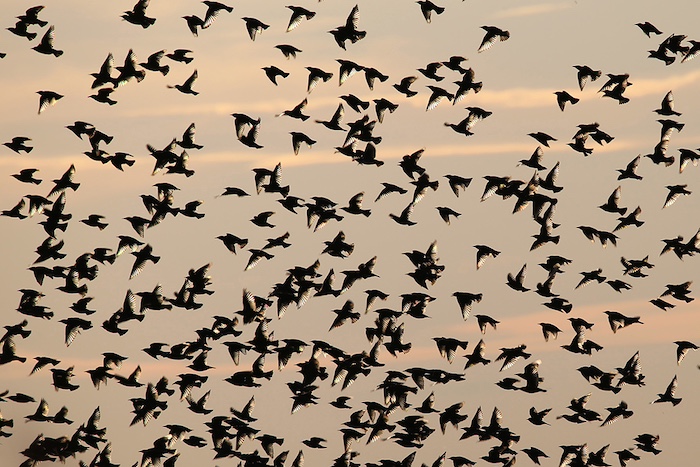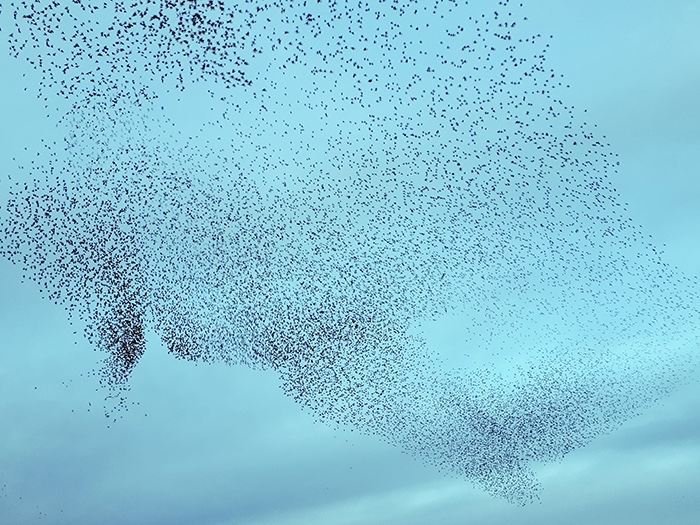
Marvellous murmuration
By Rachel Shaw
Lincolnshire Wildlife Trust
ONE of the spectacles of the natural world happen here on our doorstep in Lincoln. It’s the kind of wildlife spectacle that gets filmed for nature documentaries.
To describe it, people reach for words like breathtaking and mesmerizing. Whether you’re up close and personal, or watching from afar, it can be sensational. It is a starling murmuration.
These huge flocks of starlings are called murmurations because of the sound made by the multitude of wingbeats. They swoop and swirl across the sky in shape-shifting clouds of thousands of birds. In the wetlands of Wadden Sea National Park in Denmark, they’re known as ‘sort sol’ which means black sun. In Rome, the ‘stormi di storni’.
I had seen starling murmurations before but always on nature reserves. Until I stood beneath a murmuration Lincoln, I hadn’t appreciated the difference being in an urban environment would make.
The gentle murmuring whoosh of wings overhead was followed by a slight delay. Then a soft splat, splat, splat on tarmac. I got off lightly, with only one landing on my jacket but I felt apprehensive looking straight upwards. Anyone living in the vicinity of the roost has my sympathy.
Over the winter months, just before dusk, small groups of starlings come together above a communal roosting site. As more small groups arrive, the flock grows larger and larger. Sometimes small groups break away, do their own aerial dance, then join the main flock once again.
Still photographs capture the shapes but whilst they are moving, it confuses the eye. It’s thought that this confusion is one of the purposes of this flocking behaviour.
Murmurations offer safety in numbers. Predators such as peregrines and sparrowhawks are attracted by the sheer number of birds but it’s difficult to pick out an individual bird from the whirling flock.
The spatial awareness of the starlings as they move so rapidly is astonishing. The starlings appear as a harmonised whole. It’s as if the entire thing is choreographed but there is no plan. The starlings don’t have a leader to follow, each individual bird makes its own decisions.
The mystery of the murmurations was solved by Italian physicists. They identified the optimal number of birds for each individual to track. The magic number is seven. It’s thought that each starling pays attention to and responds to their seven closest neighbours. When one bird changes direction, the seven closest birds also change direction. In this way the whole flock keeps flying as one.
As the last of the last of the daylight fades, the birds decide the time is right. As if by a secret signal, they funnel down into their roost. The murmuration is over. These huge flocks are a phenomenon of winter.
Seeing so many starlings can leave us with the impression that they are doing well. Surely there can’t be concern for them when there are so many? Yet, like so much of our wildlife, starlings have declined significantly.
Monitoring by the British Trust for Ornithology shows that starling numbers have fallen by 66 per cent in Britain since the mid-1970s. Similar declines have occurred across much of northern Europe. With declines like this, it feels even more special to witnessing this so close to home. It’s a reminder that wildlife isn’t just something that we watch on TV and that we all share the same world.
Top picture shows Rachel Shaw’s picture of a murmuration taken from Firth Road in Lincoln.


